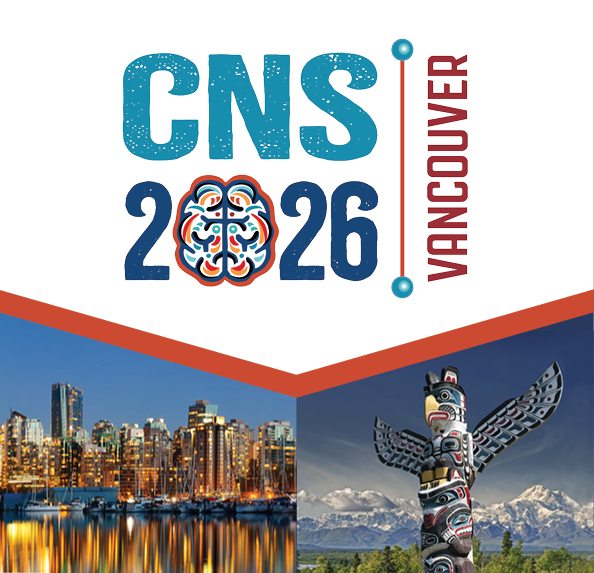Schedule of Events | Search Abstracts | Invited Symposia | Symposia | Poster Sessions | Data Blitz
Symposium Session 8 - Neuroscience needs (natural/istic) behavior: Mechanistic approaches to real-world cognition
Monday, March 9, 2026, 10:00 am – 12:00 pm PDT, Salon FChair: Avital Hahamy1; 1University College London
Presenters: Dominik R Bach, Avital Hahamy, Nachum Ulanovsky, Weizhe Hong
In controlled laboratory paradigms, behavior is typically well defined and easily quantified through reaction times, error rates, or discrete choices, allowing neural responses to be interpreted in relation to known behavioral structure. In contrast, naturalistic paradigms capture behaviors that are qualitatively different, revealing processes that go beyond what can be measured in standard laboratory tasks. Because such behaviors are often considered difficult to characterize in detail, naturalistic studies have often emphasized neural responses. This symposium brings together researchers studying diverse species and cognitive domains who show how placing behavioral structure at the center of analysis opens new paths to mechanistic insight. Dominik Bach will show how human escape behavior under acute threat follows planning-like patterns shaped by environmental constraints and personal preferences, revealing the behavioral algorithms brains must implement. Avital Hahamy will show how narrative comprehension unfolds in humans, relating behavioral measures to neural reactivations at event boundaries, and contrasting these processes with those observed in AI. Nachum Ulanovsky will present studies of freely flying bats, showing how quantifying flight trajectories, inter-bat distances and social interactions enables linking hippocampal activity to spatial and social variables. Finally, Weizhe Hong will show how structured prosocial behaviors in mice – empathy, helping, and rescue – can be decomposed into quantifiable actions and mapped onto neural circuits, with parallels in interacting artificial agents. Together, these talks argue that detailed behavioral characterization is central to mechanistic cognitive neuroscience in naturalistic settings.
Presentations
Critical intelligence: mechanisms of naturalistic adaptive behaviour in humans
Dominik R Bach1,2; 1University of Bonn, 2University College London
All animals including humans have to cope with immediate threat to survive and reproduce. Ample evidence shows that non-human animals behave in sophisticated and apparently goal-directed ways. Rapid decisions between these actions, without much leeway for cognitive or motor errors, poses a formidable computational problem. We developed a human wireless virtual reality (W-VR) platform to simulate immediate and biologically relevant threat situations in a safe manner. Here, I will present data suggestive of the neural algorithms underlying behaviour under threat. First, rapid escape from threat appears to follow a small number of distinct patterns, which are shaped by environmental characteristics and personal preferences. These preferences cannot be predicted from casual behaviour. Second, escape parameters exhibit many characteristics of reflective planning, including sensitivity to detailed threat characteristics, dynamic updating, and sensitivity to revaluation. Third, the behavioural repertoire is rapidly malleable by experience and by instruction. Further experiments suggest that this flexibility is achieved by pre-planning over a limited time horizon. Together, our results pave the way towards uncovering the mechanisms of naturalistic threat-related behaviour.
Quantifying narrative understanding through behavior and neural reactivations
Avital Hahamy1; 1University College London
How do humans build an ongoing understanding of complex, real-world experiences such as stories? We quantify narrative comprehension behaviourally to reveal the evolving structure of comprehension as it unfolds over time, capturing how past events are integrated into new interpretations. We then relate these behavioral measures to neural activity, measured with fMRI, showing that the reactivations of past events at narrative event boundaries reflect participants’ ongoing understanding. These reactivations not only prioritize central events but also support later reconstruction of the narrative from memory. Finally, we contrast this process with how large language models link narrative events, highlighting key differences between human and artificial narrative comprehension.
Neural codes for natural behaviors in bats
Nachum Ulanovsky1; 1Weizmann Institute of Science
We study the neural basis of natural behaviors, in particular navigation and social behaviors – taking a “Natural Neuroscience” approach. In my talk I will discuss three recent studies: (1) Our recent discovery that in social groups, hippocampal neurons encode rich social signals – including the identities, sex, hierarchy, and affiliation of other individuals. (2) A coding-transformation that we discovered in the hippocampus of bats flying in a very long 200-meter tunnel – from sparse coding in hippocampal area CA3 to dense coding in area CA1. (3) Neuroscience in the wild: recordings of place cells and head-direction cells in bats navigating outdoors on a remote oceanic island near Zanzibar. These three studies demonstrate different levels of experimental control vs. ecological validity in our efforts to understand the neural basis of behavior and cognition.
The Neuroscience of Prosocial Behavior: From Helping and Cooperation to Social AI
Weizhe Hong1; 1University of California, Los Angeles
We investigate the fundamental neural mechanisms underlying social behavior in both biological (mice) and artificial intelligence systems, with a focus on empathy, prosociality, and cooperation. Using a multidisciplinary approach that integrates behavioral paradigms with genetic, circuit-level, and computational tools, we demonstrate that mice exhibit comforting behavior to reduce other’s emotional distress (Wu et al. 2021), targeted helping behavior to attend to others' injuries or pain (Zhang et al. 2024), rescue-like behavior to facilitate the recovery of an responsive animal (Sun et al. 2025), and cooperative behavior to achieve shared goals (Jiang et al. 2025). Using these behavioral models, we identify key neural pathways in the amygdala and the prefrontal cortex that specifically encode and control these behaviors. In addition to mechanisms within a single brain, we demonstrate that animals exhibit inter-brain neural correlations between interacting individuals (Kingsbury et al. 2019; Zhang et al. 2025). Beyond biological systems, our research further extends to understanding emergent social behaviors between artificial intelligence systems, identifying fundamental and generalizable features of interacting neural systems present in both biological and artificial agents (Zhang et al. 2025; Jiang et al. 2025).
CNS Account Login

March 7 – 10, 2026
